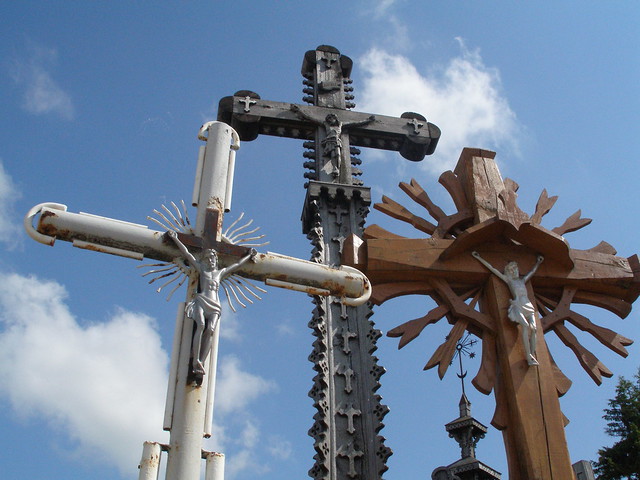
"The cross," someone once said, "has become so ordinary that we hardly see it anymore." The thought struck me as I walked through a shop with items to buy stashed in every crevice: frog-shaped garden statues, multi-colored curios, inventive décor made from soda cans, beach glass, and refurbished car parts. Occasionally surfacing through blanketed floors and ornamented walls were cross-shaped or cross-adorned objects, so ordinary in a shop so out-of-the-ordinary, they were almost hard to notice at all. The cross has become so ordinary that we hardly see it anymore. The thought altered the remainder of my browsing. How can this be true? How can an image once shameful enough to bow the proudest heads become ordinary? Could the gallows ever be innocuous? Would the death sentence of someone near us ever fail to get our attention, much less blend in beside earthenware and figurines?
Theodore Prescott is a sculptor who has spent a great deal of time thinking about the cross. In the 1980's he began working on a series of crosses using different materials, forms, and processes hoping to reconstitute the cultural and scriptural imagery of the Roman cross. In a sense, Prescott attempts to portray the incongruous. The Roman cross was a loathsome manner of execution that inflicted an anguished death; the Cross of Christ held a man who went willingly—and without guilt. Though a reflection of beauty and sacrifice, the cross is also an image of physical torture, inseparable from flesh and blood. There was a body on these beams. Its image bears both startling realities—the presence of outstretched limbs and the mystery of a now vacant cross. These contrasts alone are replete with a peculiar depth. Yet, our daily intake of the cross "precludes contemplation," notes Prescott. The cross has indeed become so ordinary that we hardly see it anymore.
Maybe he is right. But if the cross has become merely a symbol of Christianity, an emblem of one religion in a sea of others, it is still a symbol that stands secluded from the others. Even as an image among many or an image buried in bric-a-brac, it remains conspicuously on its own. The symbol of the cross is an instrument of death. Far from ordinary, it suggests, at the very least, a love quite beyond us. Perhaps it is we who have become ordinary, our senses dulled to unconsciousness by the daily matters we give precedence. Even in his own time, the apostle Paul lamented such a blurring of the cross, calling the world to a greater vision: As I have often told you before and now say again even with tears, many live as enemies of the cross of Christ. Their destiny is destruction, their god is their stomach, and their glory is in their shame. Their mind is on earthly things. But our citizenship is in heaven. the rest
image by Dainis Matisons
No comments:
Post a Comment